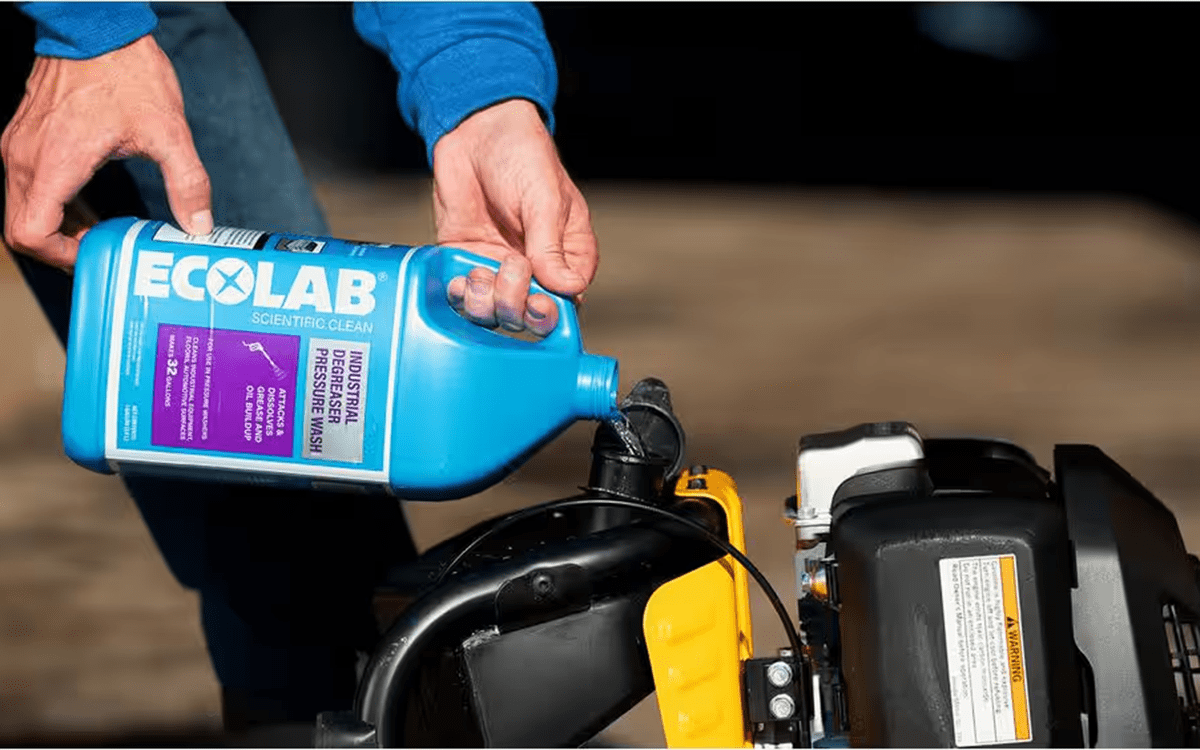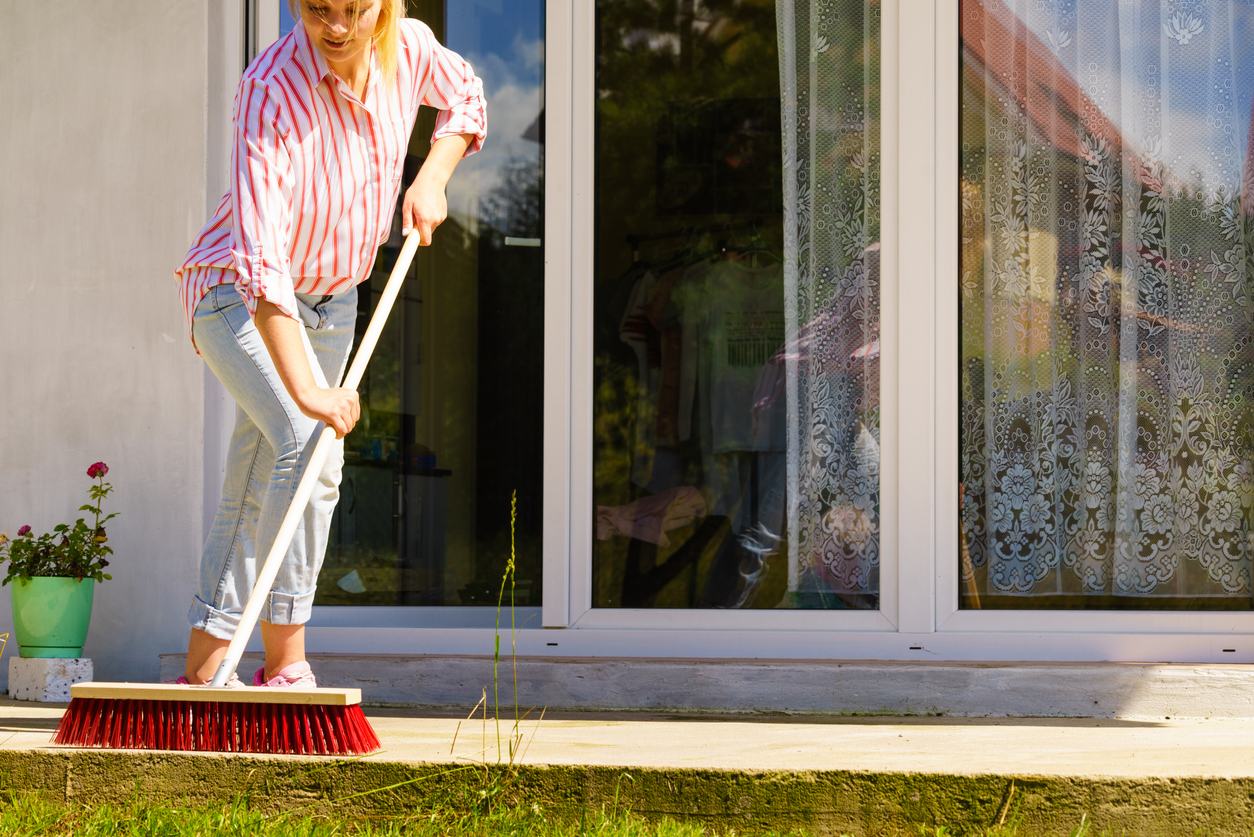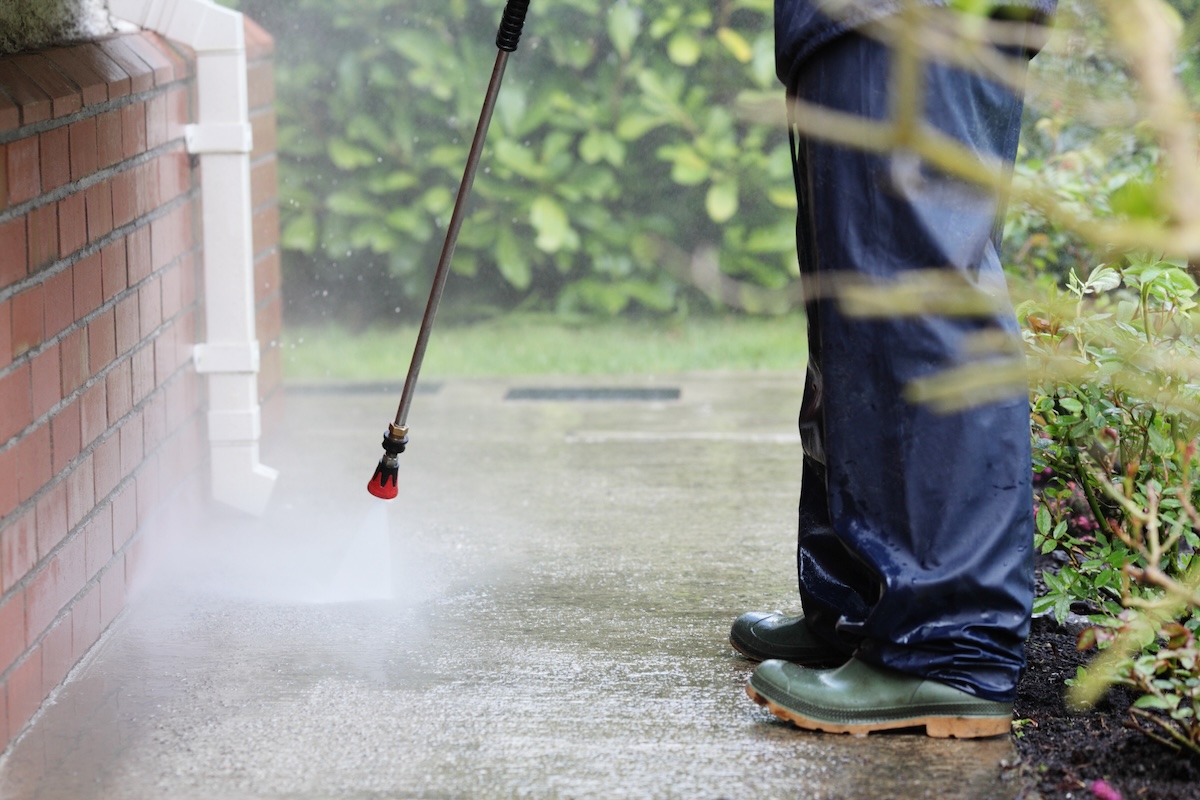We may earn revenue from the products available on this page and participate in affiliate programs. Learn More ›
This content is presented by The Home Depot. The included facts and opinions are those of BobVila.com
The first thing to know about cleaning concrete? You don’t need to go easy on it. After all, it’s one of the most durable building materials used in modern construction. But with its durability comes a stubborn resistance to cleaning, which means that sprucing it up requires the right cleanser, a little know-how, and a healthy helping of elbow grease. Keep reading for how to clean concrete with the help of Ecolab Scientific Clean products, exclusive to The Home Depot.
Tools & Materials
Bobvila.com may earn a commission from purchases made through these links.
Project Overview
Working Time: 1 to 3 hours
Total Time: 1 to 3 hours
Skill Level: Beginner
Estimated Cost: $40 to $500+
Before You Begin
Before attempting to remove concrete stains, gather up all of your supplies so you have them at the ready. If you’re using acidic cleaning agents, make sure to wear goggles, gloves, and protective clothing.
Cleaning Concrete: Finish the Job in 4 Steps or Less

As you’ll see below, the act of cleaning is just a small part of this task. As is the case with many other DIYs, you need to do diligent research and prep work before picking up a scrub brush.
STEP 1: Determine the type of sealer the concrete has.
Before you can clean concrete, determine what type of sealer was applied, if any, since it can affect the appropriate cleaning methods. If a sealer wasn’t used, stick with a mild detergent. Avoid acids since they can damage unsealed concrete.
Some sealers can withstand acidic cleaning agents, but no matter the finish, it’s always best to start with a mild detergent, reserving any acidic cleaners for particularly stubborn stains. Some common sealers and their appropriate cleaning methods include:
- Penetrating sealers: These sealers deeply penetrate concrete to protect it from water damage and deicing agents. They don’t change the concrete’s appearance. Only use a mild cleaning agent as opposed to harsh acids, which can damage this finish.
- Acrylic sealers: Acrylic sealers provide a high-gloss appearance while protecting the concrete from water and deicing damage. The protective film they form is relatively durable, so you can safely use a stiff-bristled brush to scrub away stains. It’s best to stick with a detergent as opposed to acidic cleaners, unless absolutely necessary.
- Epoxy coatings: Like acrylic sealers, epoxy coatings provide a high-gloss finish, but they’re harder and more durable, so they can usually withstand the use of acidic cleaning agents, if needed. You can use a stiff-bristled brush to tackle tougher stains.
- Polyurethane sealers: Polyurethane sealers are similar to epoxy coatings, providing a durable, high-gloss finish. Their durability means that you can use acidic cleaning agents, if necessary, as well as a stiff-bristled brush.
Pro tip: It’s not always easy to determine the type of concrete sealer used, especially when the concrete has weathered. If you can’t figure out what was used, don’t start cleaning with harsh chemicals like muriatic acid. Instead, start with something a bit milder.

STEP 2: Prepare the concrete to be cleaned.
Start by sweeping the surface clean with a broom or use a leaf blower to remove dirt, grit, and gravel. If you’re working around plants and grass, be sure to soak them well with a garden hose prior to cleaning the concrete, as this will prevent the cleaning solution from penetrating the roots.
STEP 3: Use a pressure washer to remove stuck-on gunk.
Pressure washers can penetrate concrete pores and wash out the dirt and grease. Fill the pressure washer soap reservoir with driveway and concrete cleaner, like this concentrate from Ecolab, available at The Home Depot. Apply it to the entire surface using a pressure setting of around 3,000 psi; then rinse it with water.For oil spots, apply this highly rated Ecolab Industrial Degreaser Pressure Wash Concentrate directly to the stains, and scrub with a stiff-bristled brush. Rinse it off with water.

STEP 4: Use muriatic acid as a last resort (optional).
You must be extremely cautious with muriatic acid. Don’t use this powerful acid unless you absolutely need to. If you do use it, wear protective gloves, goggles, and clothing, and always follow the manufacturer’s directions for dilution.
As a last resort, apply muriatic acid. Muriatic acid can work wonders on filthy concrete. However, it shouldn’t be used on penetrating sealers since it can damage these finishes. It might also damage some acrylic sealers, so test a small area if you’re not sure.
Start by mixing a solution of 1 part muriatic acid to 10 parts water in a bucket, then soak the stained area. Wait about 10 minutes and then spray the area with a solution of 1 cup of ammonia to 1 gallon of water to neutralize and clean the acid.
Final Thoughts
Once your concrete patio or driveway is clean, consider adding a sealer. Concrete sealers can prevent stains in the future. You can apply most sealers using a paint roller or sprayer. You can also acid stain the concrete surface before sealing for a marbled look.

FAQs
We reviewed the basics on cleaning concrete, but here are some answers to lingering questions you might have.
The best way to clean concrete stains depends on the stain. For instance, vinegar is useful for removing rust stains. Simply pour diluted vinegar on the stain and allow it to soak in for 15 to 20 minutes before scrubbing with a stiff brush. Rinse the area afterward.
If the oil is still wet, you can sprinkle kitty litter or cornstarch over the affected area to soak it up. Let it sit for three days, then vacuum it. To clean dry oil stains, apply a concrete degreaser to the stain, let it sit for several minutes (or according to the manufacturer’s instructions), then rinse it with water. You can also use this method for tire marks.
Start by mixing 1 cup of vinegar and 2/3 cup of water in a spray bottle, then apply the solution to the affected area. Let it sit for a few minutes before scrubbing it with a brush and rinsing. If any mildew remains, you can mix 1 cup of bleach with 1 gallon of water, then soak the area and let it sit for several minutes. Scrub the stain with a stiff-bristled brush then rinse with clean water and repeat until all mildew is gone.
Mix 1 tablespoon of detergent with 1 tablespoon of white vinegar and 2 cups of water. Soak the area with the solution, let it sit for 15 minutes, and scrub it clean with a brush. Rinse the area with clean water when finished.

